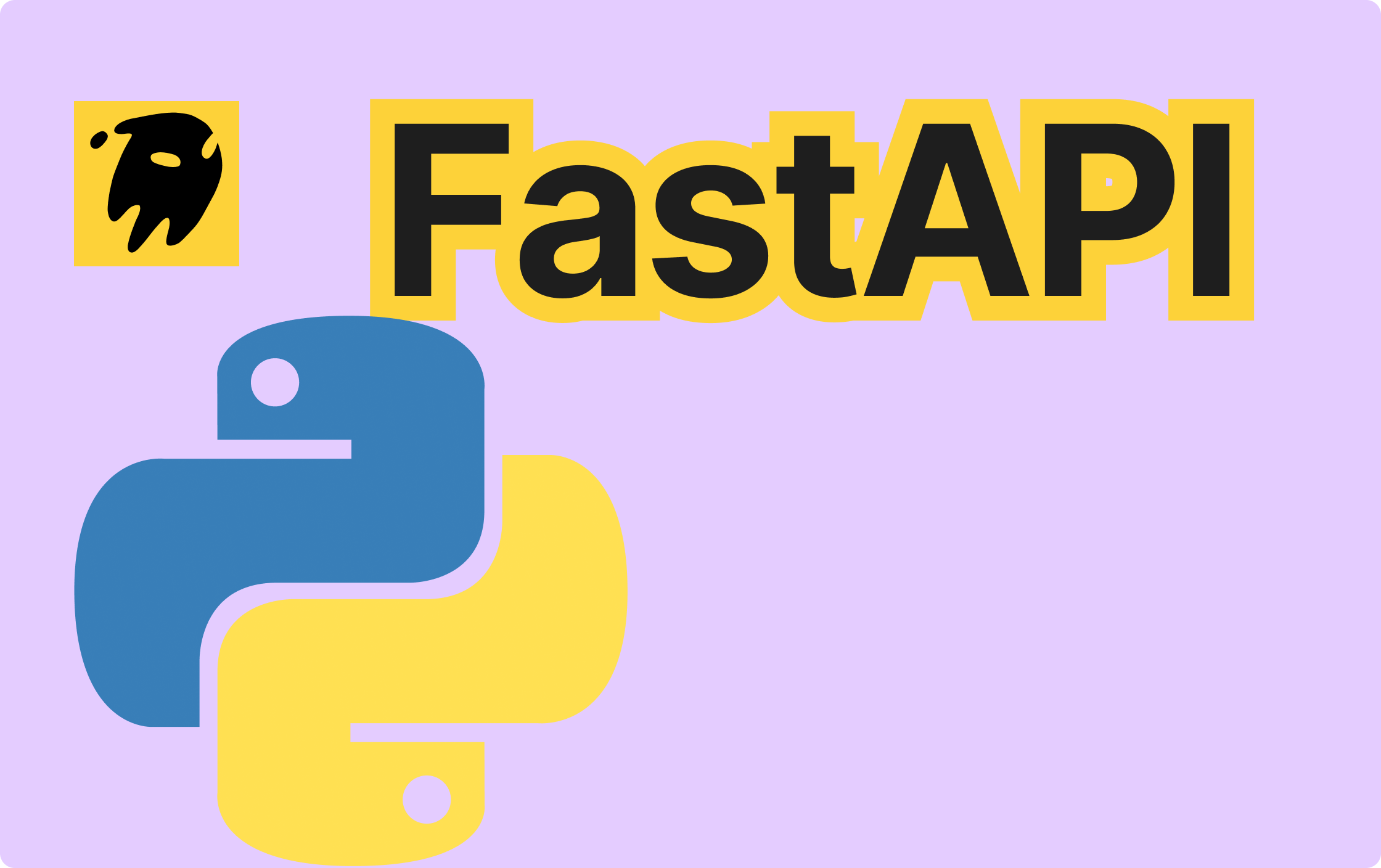FastAPI가 내부적으로 어떻게 작동하는가: ASGI와 라우팅 설명
Daniel Hayes
Full-Stack Engineer · Leapcell

FastAPI가 내부적으로 어떻게 작동하는가: ASGI와 라우팅 설명
스크래치부터 간단한 FastAPI 구축: ASGI와 핵심 라우팅 이해
소개: 왜 이 바퀴를 재발명하는가?
파이썬 비동기 웹 프레임워크에 대해 이야기할 때, FastAPI는 의심할 여지 없이 최근 몇 년간 가장 밝게 빛나는 별입니다. 이 프레임워크는 뛰어난 성능, 자동 API 문서 생성, 타입 힌트 지원으로 널리 인정받고 있습니다. 하지만 이 강력한 프레임워크 뒤에 어떤 마법이 숨어 있는지 궁금해 본 적이 있나요?
오늘 우리는 ASGI 프로토콜과 라우팅 시스템이라는 두 가지 핵심 개념을 이해하는 데 초점을 맞춰 FastAPI의 단순화된 버전을 스크래치부터 구축할 것입니다. 우리 손으로 직접 구축함으로써 현대 비동기 웹 프레임워크의 작동 원리를 파악하게 될 것입니다. 이는 FastAPI를 더 잘 사용하는 데 도움이 될 뿐만 아니라 문제가 발생했을 때 근본 원인을 신속하게 식별할 수 있게 해줍니다.
ASGI란 무엇인가? WSGI보다 왜 더 발전했는가?
코딩을 시작하기 전에 ASGI(Asynchronous Server Gateway Interface)를 이해해야 합니다. ASGI는 FastAPI가 고성능 비동기 처리를 달성할 수 있도록 하는 기반입니다.
WSGI의 제한 사항
Django나 Flask를 사용해 본 적이 있다면 WSGI(Web Server Gateway Interface)에 대해 들어본 적이 있을 것입니다. WSGI는 파이썬 웹 애플리케이션과 서버 간의 동기 인터페이스 사양이지만 다음과 같은 명백한 결함이 있습니다.
- 한 번에 하나의 요청만 처리할 수 있으며 동시성이 없습니다.
- 장기 연결(예: WebSocket)을 지원하지 않습니다.
- 비동기 I/O의 장점을 최대한 활용할 수 없습니다.
ASGI의 장점
ASGI는 이러한 문제를 해결하기 위해 만들어졌습니다.
- 완전히 비동기적이며 여러 요청의 동시 처리를 지원합니다.
- WebSocket 및 HTTP/2와 호환됩니다.
- 미들웨어가 비동기 환경에서 작동할 수 있도록 합니다.
- 요청 수명 주기 전반에 걸쳐 비동기 이벤트를 지원합니다.
간단히 말해서 ASGI는 비동기 웹 애플리케이션이 서버(예: Uvicorn)와 통신할 수 있도록 하는 표준 인터페이스를 정의합니다. 다음으로 최소한의 ASGI 서버를 구현할 것입니다.
1단계: 기본 ASGI 서버 구현
ASGI 애플리케이션은 기본적으로 scope, receive, send의 세 가지 매개변수를 받는 호출 가능한 객체(함수 또는 클래스)입니다.
# asgi_server.py import socket import asyncio import json from typing import Callable, Awaitable, Dict, Any # ASGI 애플리케이션 타입 정의 ASGIApp = Callable[[Dict[str, Any], Callable[[], Awaitable[Dict]]], Awaitable[None]] class ASGIServer: def __init__(self, host: str = "127.0.0.1", port: int = 8000): self.host = host self.port = port self.app: ASGIApp = self.default_app # 기본 어플리케이션 async def default_app(self, scope: Dict[str, Any], receive: Callable, send: Callable): """기본 어플리케이션: 404 응답 반환""" if scope["type"] == "http": await send({ "type": "http.response.start", "status": 404, "headers": [(b"content-type", b"text/plain")] }) await send({ "type": "http.response.body", "body": b"Not Found" }) async def handle_connection(self, reader: asyncio.StreamReader, writer: asyncio.StreamWriter): """새로운 연결을 처리하고, HTTP 요청을 파싱하여 ASGI 어플리케이션에 전달""" data = await reader.read(1024) request = data.decode().split("\r\n") method, path, _ = request[0].split() # ASGI scope 생성 scope = { "type": "http", "method": method, "path": path, "headers": [] } # 요청 헤더 파싱 for line in request[1:]: if line == "": break key, value = line.split(":", 1) scope["headers"].append((key.strip().lower().encode(), value.strip().encode())) # receive 및 send 메서드 정의 async def receive() -> Dict: """메시지 수신 시뮬레이션 (간소화 버전)""" return {"type": "http.request", "body": b""} async def send(message: Dict): """클라이언트에 응답 전송""" if message["type"] == "http.response.start": status = message["status"] status_line = f"HTTP/1.1 {status} OK\r\n" headers = "".join([f"{k.decode()}: {v.decode()}\r\n" for k, v in message["headers"]]) writer.write(f"{status_line}{headers}\r\n".encode()) if message["type"] == "http.response.body": writer.write(message["body"]) await writer.drain() writer.close() # ASGI 애플리케이션 호출 await self.app(scope, receive, send) async def run(self): """서버 시작""" server = await asyncio.start_server( self.handle_connection, self.host, self.port ) print(f"Server running on http://{self.host}:{self.port}") async with server: await server.serve_forever() # 서버 실행 if __name__ == "__main__": server = ASGIServer() asyncio.run(server.run())
이 단순화된 ASGI 서버는 기본적인 HTTP 요청을 처리하고 응답을 반환할 수 있습니다. 스크립트를 실행한 후 http://127.0.0.1:8000을 방문하여 테스트해 보세요. 아직 라우트를 정의하지 않았기 때문에 "Not Found"가 표시됩니다.
2단계: 라우팅 시스템 구현
FastAPI의 가장 직관적인 기능 중 하나는 다음과 같은 우아한 라우트 정의입니다.
@app.get("/items/{item_id}") async def read_item(item_id: int, q: str = None): return {"item_id": item_id, "q": q}
유사한 라우팅 기능을 구현해 보겠습니다.
라우팅 핵심 구성 요소 설계
세 가지 핵심 구성 요소가 필요합니다.
- Router: 모든 라우팅 규칙 관리
- Decorators: @get, @post 등 라우트 등록용
- Path matching: 동적 경로 매개변수 처리(예: /items/{item_id})
# router.py from typing import Callable, Awaitable, Dict, Any, List, Tuple, Pattern import re from functools import wraps # 라우트 타입 정의 RouteHandler = Callable[[Dict[str, Any]], Awaitable[Dict[str, Any]]] class Route: def __init__(self, path: str, methods: List[str], handler: RouteHandler): self.path = path self.methods = [m.upper() for m in methods] self.handler = handler self.path_pattern, self.param_names = self.compile_path(path) def compile_path(self, path: str) -> Tuple[Pattern, List[str]]: """경로를 정규 표현식으로 변환하고 매개변수 이름 추출""" param_names = [] pattern = re.sub(r"{([\w]+)}", lambda m: (param_names.append(m.group(1)), r"(\\w+)")[1], path) return re.compile(f"^{pattern}$"), param_names def match(self, path: str, method: str) -> Tuple[bool, Dict[str, Any]]: """경로 및 메서드 일치, 매개변수 반환""" if method not in self.methods: return False, {} match = self.path_pattern.match(path) if not match: return False, {} params = dict(zip(self.param_names, match.groups())) return True, params class Router: def __init__(self): self.routes: List[Route] = [] def add_route(self, path: str, methods: List[str], handler: RouteHandler): """라우트 추가""" self.routes.append(Route(path, methods, handler)) def route(self, path: str, methods: List[str]): """라우트 데코레이터""" def decorator(handler: RouteHandler): self.add_route(path, methods, handler) @wraps(handler) async def wrapper(*args, **kwargs): return await handler(*args, **kwargs) return wrapper return decorator # Shortcut 메서드 def get(self, path: str): return self.route(path, ["GET"]) def post(self, path: str): return self.route(path, ["POST"]) async def handle(self, scope: Dict[str, Any], receive: Callable) -> Dict[str, Any]: """요청 처리, 일치하는 라우트 찾기 및 실행""" path = scope["path"] method = scope["method"] for route in self.routes: matched, params = route.match(path, method) if matched: # 쿼리 매개변수 파싱 query_params = self.parse_query_params(scope) # 경로 매개변수와 쿼리 매개변수 병합 request_data = {** params, **query_params} # 핸들러 함수 호출 return await route.handler(request_data) # 라우트를 찾을 수 없음 return {"status": 404, "body": {"detail": "Not Found"}} def parse_query_params(self, scope: Dict[str, Any]) -> Dict[str, Any]: """쿼리 매개변수 파싱 (단순화 버전)""" # 실제 ASGI에서 쿼리 매개변수는 scope["query_string"]에 있습니다. query_string = scope.get("query_string", b"").decode() params = {} if query_string: for pair in query_string.split("&"): if "=" in pair: key, value = pair.split("=", 1) params[key] = value return params
라우팅을 ASGI 서버와 통합
이제 라우팅 시스템을 사용하도록 ASGI 서버를 수정해야 합니다.
# ASGIServer 클래스에 라우팅 지원 추가 class ASGIServer: def __init__(self, host: str = "127.0.0.1", port: int = 8000): self.host = host self.port = port self.router = Router() # 라우터 인스턴스화 self.app = self.asgi_app # 라우팅 활성화 ASGI 애플리케이션 사용 async def asgi_app(self, scope: Dict[str, Any], receive: Callable, send: Callable): """라우팅 기능이 있는 ASGI 어플리케이션""" if scope["type"] == "http": # 요청 처리 response = await self.router.handle(scope, receive) status = response.get("status", 200) body = json.dumps(response.get("body", {})).encode() # 응답 전송 await send({ "type": "http.response.start", "status": status, "headers": [(b"content-type", b"application/json")] }) await send({ "type": "http.response.body", "body": body })
3단계: 매개변수 파싱 및 타입 변환 구현
FastAPI의 하이라이트 중 하나는 자동 매개변수 파싱 및 타입 변환입니다. 이 기능을 구현해 보겠습니다.
# Router의 handle 메서드에 타입 변환 추가 async def handle(self, scope: Dict[str, Any], receive: Callable) -> Dict[str, Any]: # ... 이전 코드 ... if matched: # 쿼리 매개변수 파싱 query_params = self.parse_query_params(scope) # 경로 매개변수와 쿼리 매개변수 병합 raw_data = {** params, **query_params} # 핸들러 함수에서 매개변수 타입 어노테이션 가져오기 handler_params = route.handler.__annotations__ # 타입 변환 request_data = {} for key, value in raw_data.items(): if key in handler_params: target_type = handler_params[key] try: # 타입 변환 시도 request_data[key] = target_type(value) except (ValueError, TypeError): return { "status": 400, "body": {"detail": f"Invalid type for {key}, expected {target_type}"} } else: request_data[key] = value # 핸들러 함수 호출 return await route.handler(request_data)
이제 프레임워크는 함수 어노테이션에 지정된 타입으로 매개변수를 자동으로 변환할 수 있습니다!
4단계: 요청 바디 파싱 구현 (POST 지원)
다음으로 JSON 데이터 파싱을 가능하게 하여 POST 요청 바디에 대한 지원을 추가합니다.
# Router에 요청 바디 파싱 추가 async def handle(self, scope: Dict[str, Any], receive: Callable) -> Dict[str, Any]: # ... 이전 코드 ... # POST 요청인 경우 요청 바디 파싱 request_body = {} if method == "POST": # receive에서 요청 바디 가져오기 message = await receive() if message["type"] == "http.request" and "body" in message: try: request_body = json.loads(message["body"].decode()) except json.JSONDecodeError: return { "status": 400, "body": {"detail": "Invalid JSON"} } # 모든 매개변수 병합 raw_data = {** params, **query_params,** request_body} # ... 타입 변환 및 핸들러 함수 호출 ...
5단계: 완전한 예제 애플리케이션 구축
이제 FastAPI와 마찬가지로 프레임워크를 사용할 수 있습니다.
# main.py from asgi_server import ASGIServer import asyncio # 서버 인스턴스르 생성합니다 (라우터 포함) app = ASGIServer() router = app.router # 라우트 정의 @router.get("/") async def root(): return {"message": "Hello, World!"} @router.get("/items/{item_id}") async def read_item(item_id: int, q: str = None): return {"item_id": item_id, "q": q} @router.post("/items/") async def create_item(name: str, price: float): return {"item": {"name": name, "price": price, "id": 42}} # 어플리케이션 실행 if __name__ == "__main__": asyncio.run(app.run())
이 애플리케이션을 테스트합니다.
- http://127.0.0.1:8000 방문 → 환영 메시지 받기
- http://127.0.0.1:8000/items/42?q=test 방문 → 매개변수가 있는 응답 받기
- {

